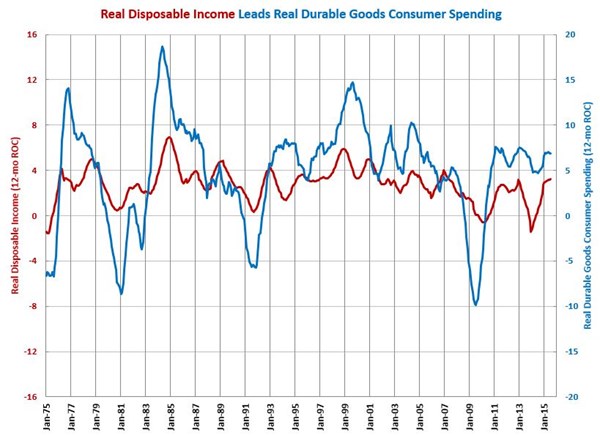Consumer Spending Growth Remains Below Average
That has been the case for five of the last six months.
Real consumer spending in July 2015 was $11,212 billion real dollars (seasonally adjusted at an annual rate). As is the case almost every month, this was an all-time high in consumer spending. The month-over-month rate of growth in consumer spending was 3.2 percent, which was fifth time in six months that the month-over-month rate of change has been below average. The annual rate of change was unchanged at 3.2 percent. While the annual rate of change could accelerate some in the next few months as a result of moderately accelerating growth in disposable income, shorter term data in both disposable income and consumer spending indicate that consumer spending is very near its peak rate of growth.
Durable goods spending also hit an all-time high in July. And, its rate of growth remained above average. In July, durable goods spending grew at its fastest rate since February 2015. The annual rate of change has been virtually 7.0 percent for six straight months. It does appear that durable goods spending growth has hits its peak rate this cycle. This month durable goods spending was 13.2 percent of all consumer spending, which was an all-time high as well. Durable goods spending continues to represent an ever-increasing portion of consumer spending because of historically and artificially low interest rates.
Real consumer spending (or its sub-components such as medical care spending) is an important leading for a number of durable goods end markets: construction materials; custom processors; durable goods; food/beverage processing; forming/fabricating (non-auto); hardware; HVAC; industrial motors/hydraulics/mechanical components; machinery/equipment manufacturing; medical; metalcutting job shops; oil/gas field/mining machinery; power generation; primary metals; and printing.



.JPG;width=70;height=70;mode=crop)